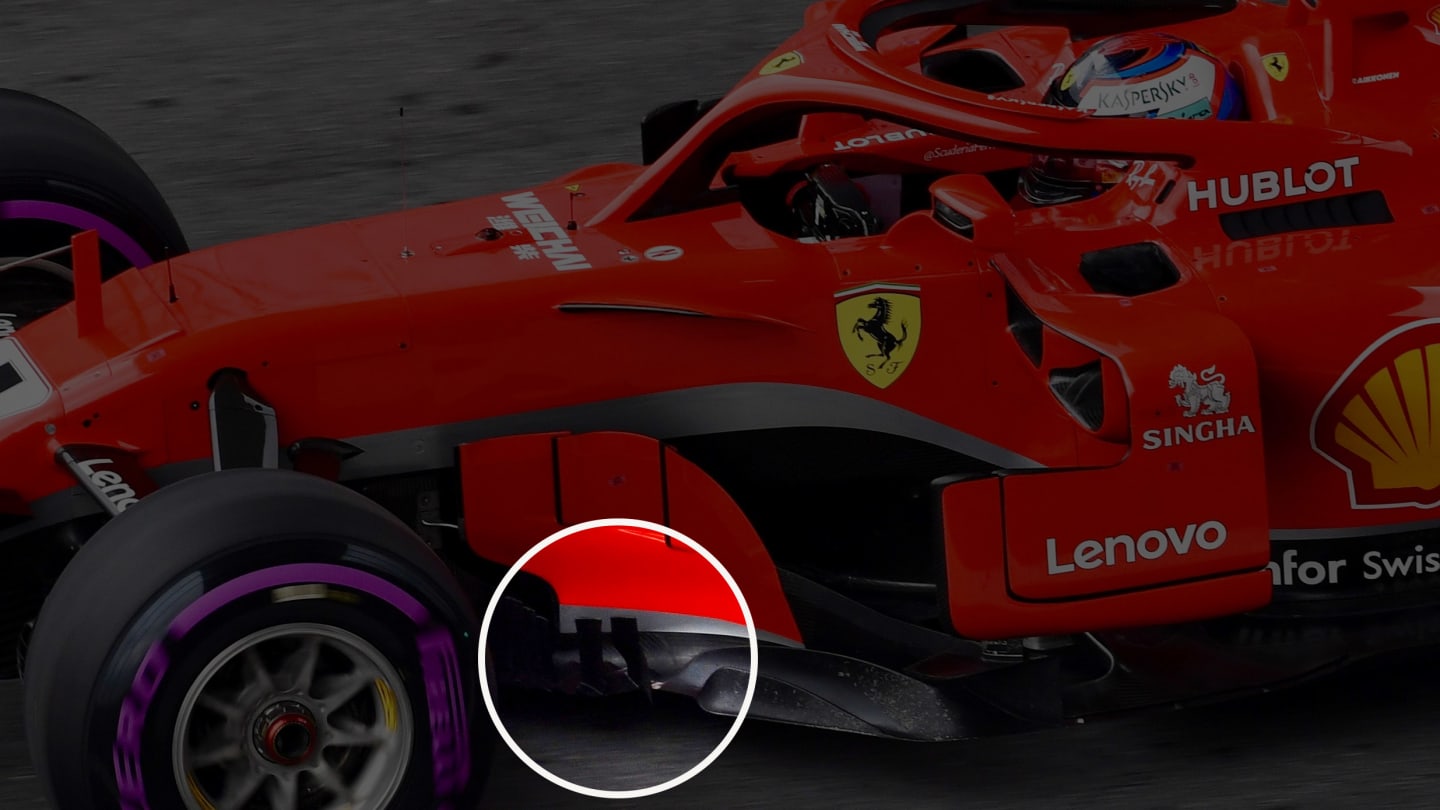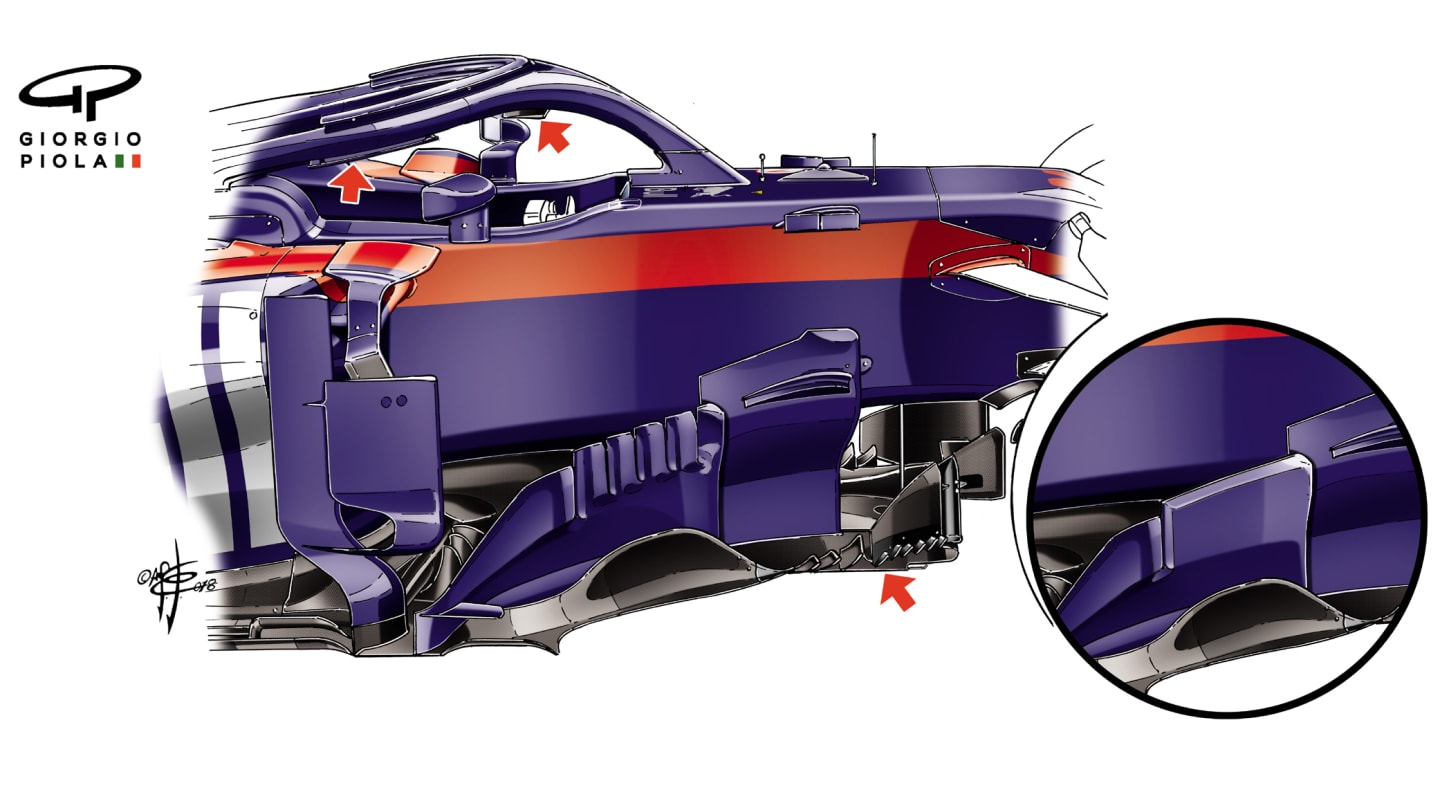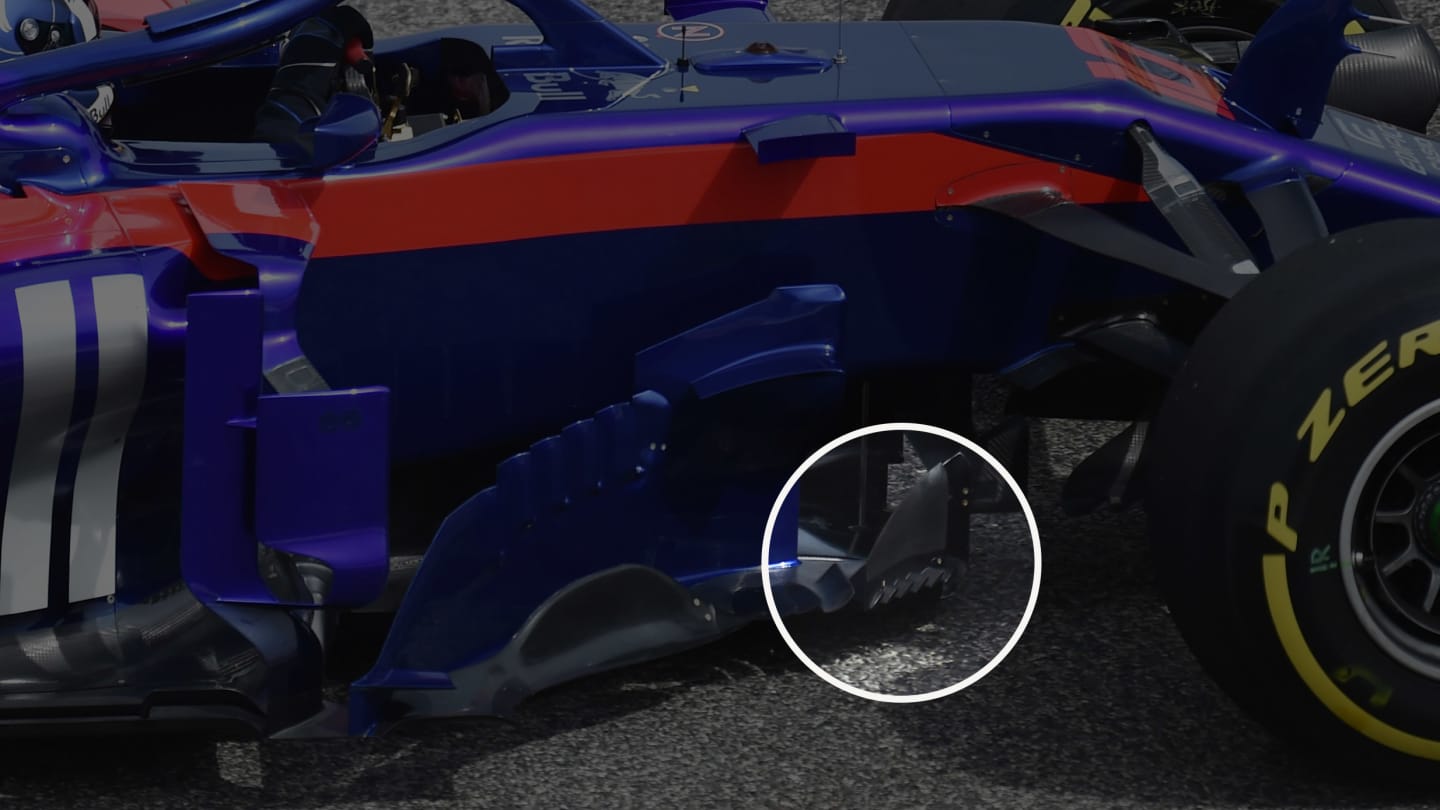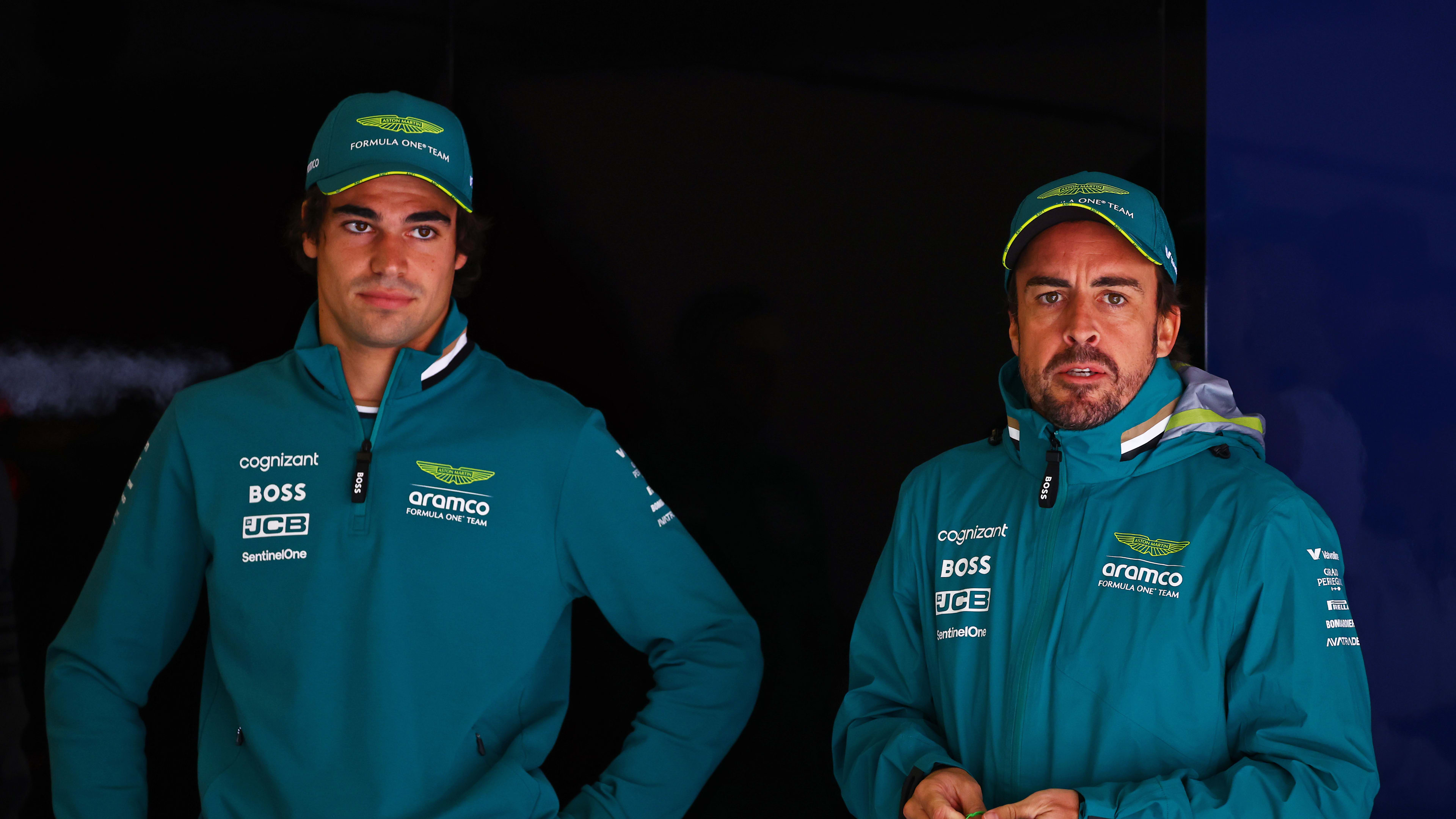)
Technical
TECH TUESDAY: 3 top tweaks from Bahrain and China

Technical Contributors
Mark Hughes and Giorgio PiolaShare
)
We may only be three races into the season, but look closely and most cars are already significantly different to the ones that appeared in Australia. Mark Hughes and Giorgio Piola examine three recent upgrades from three of the teams that hogged the headlines in Sakhir and Shanghai...
1. RED BULL'S NEW FLOOR
They may still be lacking a little pace in qualifying, but in race trim Red Bull are beginning to fly, as evidenced in China. Part of that can be attributed to a tweak to the shaping of the floor ahead of the rear wheels that the team introduced in Bahrain.
The previous angular corner was replaced by one with an aggressively multiple-contoured shape (see above), similar to that introduced by Toro Rosso at last year’s Italian Grand Prix.
This part of the floor is crucial in getting the whole airflow through the diffuser exit to work properly. The rotating tyre effectively scavenges the air through the various slots and vanes, preventing it from being sucked into the underfloor by the low-pressure area created there.

Seen from above, the amount of detail in Red Bull's new floor design is astonishing. © Sutton Images
This affords the airflow being fed through the floor’s leading edge on its way through the diffuser the cleanest, most efficient passage possible. The re-profiled corner of the floor will have given better control of that external airflow.
2. FERRARI'S BIGGER VORTEX GENERATOR
Three races on three very different tracks, and Ferrari have been extremely competitive on all of them. Sebastian Vettel has spoken of the need for the team to keep developing the SF71H to stay on top, and part of the package of small aerodynamic tweaks made in Bahrain was the increased height of the ‘mushroom’ vortex generator at the outer edge of the bargeboard area.

The new, larger 'mushroom vortex generator' on the SF71H. © Giorgio Piola
Vortices created from here propagate and prevent the airflow which has been disturbed by passing around the front wheels from returning inboard and interfering with the flow into and over the sidepods. This area is crucial for downforce creation.

The mushroom vortex generators in context. © Sutton Images
It just goes to show that not all aerodynamic changes have to be massive. In a lot of cases it's about refinement of small details.
3. TORO ROSSO'S REIMAGINED BARGEBOARDS
Putting aside a fairly miserable weekend in China, arguably the surprise story of the season so far has been the performance of the Honda-powered Toro Rosso STR13, in which Pierre Gasly finished a resounding fourth in Bahrain, having qualified sixth, best of the rest after the big three teams of Ferrari, Mercedes and Red Bull.
Although the Honda engine is performing much more strongly this year, Toro Rosso’s form in Bahrain was a massive step up from that of the opening round in Australia two weeks earlier – and the main reason behind this was a significant aerodynamic upgrade.

The various aero changes introduced to the STR11 in Bahrain. © Giorgio Piola
The most visually obvious part of this upgrade is a totally reworked bargeboard area. In place of the two big, simply-contoured vanes behind the main bargeboard is a series of five much smaller ‘finger’ vanes (see above) giving a greater fidelity of control of the airflow around the sidepod and down towards the back of the car.
After travelling past the bargeboards and down past the ‘coke bottle’ profile of the lower bodywork, this part of the airflow exits between the rear wheel inner shoulder and outer edge of the diffuser.
The more energy that airflow can retain as it travels down the car, the faster it can exit that gap and the harder it draws on the air coming through the diffuser, thereby increasing the downforce created by the underfloor. These bargeboard revisions will be allowing more of the airflow energy to be retained as it travels down the car.

Toro Rosso's new 'finger vanes' in context. © Sutton Images
These revisions have been made in combination with a change to the front outer edge of the floor, which has been simplified, with three extra gills (arrowed in the drawing) behind the fence that keeps that airflow separate from that feeding the main bargeboard vanes. There are also additional small aero appendages attached to the halo (arrowed in the drawing) to enhance the flow into the engine airbox behind.
After an anonymous weekend in China, Toro Rosso will be hoping to be back in the hunt for points in Azerbaijan.
YOU MIGHT ALSO LIKE
Podcast F1 NATION: Norris' ‘surprising’ podium, Zhou’s homecoming and Verstappen’s first win in Shanghai – it's our Chinese GP review
TechnicalF1 Unlocked TECH WEEKLY: Haas's significant Shanghai upgrade – and what it says about Komatsu's approach as team boss
Podcast BEYOND THE GRID: Stoffel Vandoorne on his dramatic F1 debut, his tough exit and much more
OpinionF1 Unlocked PALMER: I have no doubt Norris is world champion material – so has he made the right choice in committing to McLaren?




